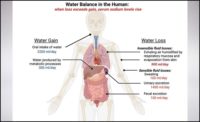The COVID-19 virus has mutated! How did this happen and what does it mean for humans? Contrary to the mental image that many people have, viruses are not alive. Rather, they are tiny packages of either DNA or RNA genes that cannot live or reproduce on their own. To avoid extinction, viruses infect animal hosts and then turn the host cells into virus generators. During this process of replication within host cells, genetic codes of the virus are copied to create multiple “mini-me” copies. Coronaviruses, and most viruses that cause new diseases in humans, have single-stranded RNA genes that are notoriously prone to errors during replication. These errors led to mutations in the “mini-me” copy of the parent virus. While some mutated virus offspring cannot survive, others may actually have greater fitness for their environment.
In late 2019, the SARS-CoV-2 virus became known to all of us. The high mutation rate of this RNA virus enabled the virus to cross-host species and quickly move from the non-human population to humans, spread rapidly across geographical barriers, and conclusively remind us that pandemics are not a thing of the past. While we have been scurrying to create and distribute a vaccine, the virus has continued to adapt to surrounding conditions, thus preserving its ability to survive in our human environments.
Understanding the environmental conditions that are associated with mutations in the SARS-CoV-2 RNA is key to determining future evolutionary trajectories of new strains of this virus. As herd immunity, vaccine-induced immunity, antiviral therapies, and environmental disinfection pressures expand, will these pressures promote genetic mutations that allow greater virus stability and transmissibility or drive SARS-CoV-2 to extinction?
We can answer this question using new tools, such as high-throughput nucleotide sequencing to detect where, when, and how viral pathogens respond to environmental forces. These tools have revealed several mutation patterns, known as mutation signatures, that we need to be aware of as we move forward. One of the physiochemical forces with a clear mutation signature in genomes is ultraviolet light (UV) radiation from the range of wavelengths associated with UVC, UVB, and UVA. Across the SARS-CoV-2 genomes analyzed worldwide, the rate of mutation signatures associated with UV light is higher than what is expected if these events took place randomly.
The preponderance of UV mutation signatures in SARS-CoV-2, over and above the general replication error-induced mechanism of mutagenesis, requires that we remain vigilant about the long-term effects of disinfection strategies in our indoor environments. As we work to reduce the transmission of viral infections indoors through heating, chemical disinfectants, and ultraviolet light irradiation strategies, we will need to carefully monitor the incidence of mutation signatures in global SARS-CoV-2 genomes.
The new SARS-CoV-2 strain, fortunately, has not been found to cause more severe disease when compared to the original strain. Also, thankfully, the COVID-19 vaccines that are currently being distributed — ones based on the original virus spike sequence — are effective in inducing immunity to the new strain. While these findings allay fears right now, we need to remain cognizant of the agility of the viral RNA genome in its fight for survival.
References available upon request.





